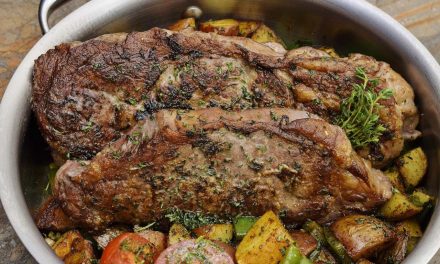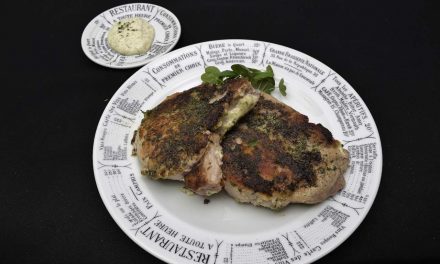Sous vide teaches us some very important things. More science is directly applied to sous vide than to most of the other more familiar methods of cooking. This is not to say that other methods of cooking are not dependent on science. Using scientific method to make food safe to eat is almost always the purpose of applying heat to it in the first place. Only after that can we move on to the goals of tenderness, flavor, and appearance.
Many of us know that Baldwin’s tables are dedicated to safety, safety, and more safety. Familiarity with HACCP plans and USDA guidelines bring us to the understanding that food can spend only so much time in the “temperature danger zone.” The zone ranges from 40 F/4 C to somewhere around 125 F/ 52 C. Food should not spend more than four hours in this danger zone. That four hour clock ticks while the food is travelling from 40 F/4 C to 125 F/ 52 C. But that clock also ticks as the food travels from 125 F/ 52 C to 40 F/4 C.
I find myself reminding people of this a lot.
It usually takes longer to heat UP than it does to cool DOWN because iced water shocking removes energy faster than the sous vide bath can apply it. So far so good. The four hour rule is fairly easy to comply with as long as the food is not more than 8”/20 cm thick. Beyond that, there are challenges in both directions, as it were.
Up and Down
But wait a minute. If we have “spent” most of those four hours sous vide processing a protein the first time, what happens when we want to heat it up again? Well, there’s bad news and there’s good news. This is where sous vide runs into trouble in restaurants. Health inspectors are accustomed to enforcing the four hour rule, but if you are retherming food that has been sous vide processed once already, there is a good chance that you are going to exceed that limit if you use sous vide again. This is one of the reasons that I almost never include sous vide retherming in my recipes and articles. When people bring it up, I point out the challenges.
I told you there was bad news! But I said there was good news, too, right? The good news is that if you use Baldwin’s time/temp guidelines, that protein that you are reheating is pasteurized, like a sealed carton of milk. Therefore, sous vide aficionados argue that the clock should be rewound back to zero because the food is safe as it is. That’s a good argument, at least from the standpoint of killing off bacteria.
More?
But that’s not the only problem. Autolysis (your basic spoilage) does not REQUIRE the presence of bacteria. Food spoils on its own–and it’s a good thing it does, because there would be a lot of meat lying around on the ground otherwise–too much for even the scavengers. Evolution/our Creator built spoilage in, and it’s necessary in order to free up carbon and other elements in protein that the next generation needs to keep going.
Autolysis operates on more or less the same schedule as pathogenic activity. We all know that once proteins sit out at room temperature for more than four hours, it’s probably not a good idea to eat them–but it doesn’t necessarily have anything to do with bacteria. I joke that once you learn about sous vide, you stop making breakfast out of the pizza that sat out all night. You stop letting that turkey carcass sit out on the table all afternoon after your holiday meal for people to pick at with their dirty hands. Sure, there are bacteria present–but the food will go bad regardless. Autolysis can be just as toxic as Salmonella.
How did we make it this far?
So the next time you decide to reheat sous vide processed food, keep this in mind. Even though bacteria are odorless, colorless, and tasteless, autolysis is USUALLY not. We all know what the “off” taste is. Anyway, I do use sous vide to retherm sometimes–not often. But I would rather not, even though it has never created a problem for me. Before you ask, searing at the end will not reverse the effects of autolysis that have already occurred.
This is what I mean when I say “treat as raw.” I don’t mean use sous vide to reheat the food that was already processed sous vide. I mean that once you have processed and shocked the chicken, pretend like it’s raw and use conventional methods to make fried chicken or broiled chicken or pulled chicken or curried chicken or whatever you like. It will still benefit from having been sous vide processed in the first place, because of the amazing moisture preserving characteristics of the methodology. And it will be safer than it would if you had skipped the sous vide processing in the first place. Win/win.




